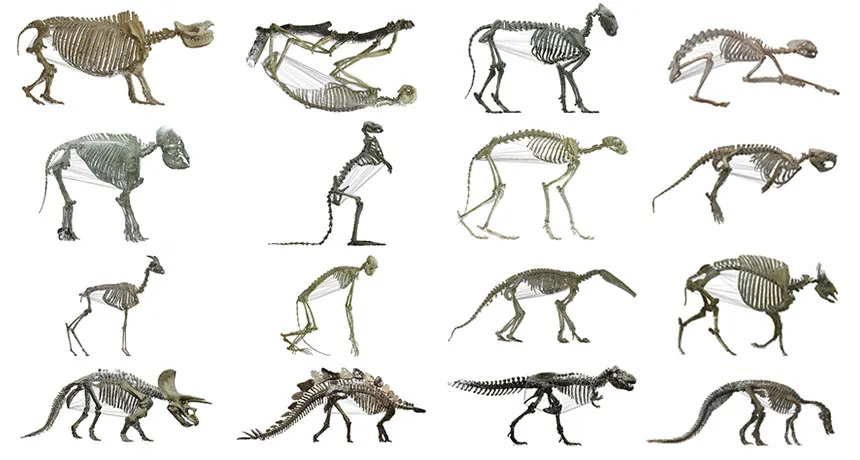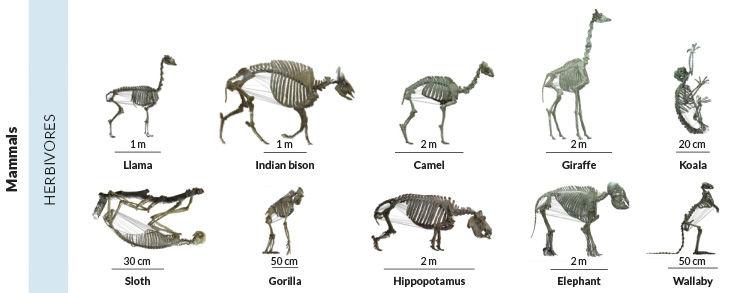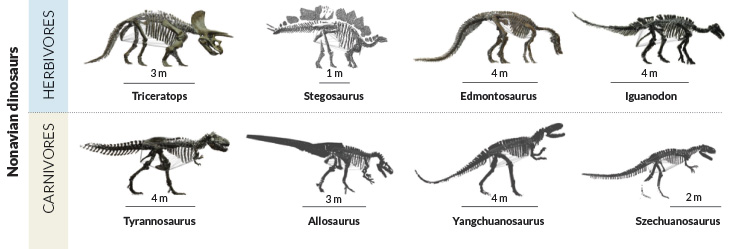Plant-eating mammals sport bigger bellies than meat eaters
Body cavity volume of 126 animals shows herbivores have larger bellies than carnivores

GUT CHECK Using 3-D scans of mounted skeletons, scientists measured the body cavities of 126 animal species, including herbivores such as sloths, elephants and stegosaurus as well as carnivores such as lions, otters and T. rex.
M. Clauss et al/Journal of Anatomy 2016









